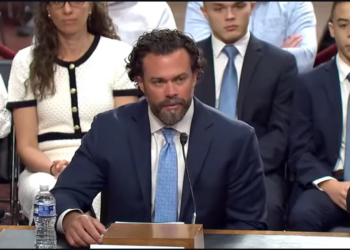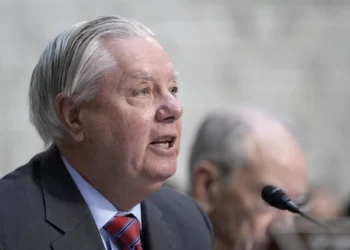The economy added 73,000 jobs in July and the unemployment rate rose a tenth of a percentage point to 4.2%, the Bureau of Labor Statistics reported Friday.
Investors had expected roughly 108,000 new jobs and for the unemployment rate to rise a tenth of a percentage point to 4.2%.
The interpretation
Brian Marks, executive director of the University of New Haven’s Entrepreneurship and Innovation Program, told the Washington Examiner that the biggest surprise was the downward revisions in jobs from previous months.
“So it suggests we have a weakness, and the increase in employment is increasing at a slower rate,” Marks said, also noting the uptick in unemployment.
What it means…for Trump
Friday’s report shows that job growth, which was relatively strong throughout the beginning of Trump’s tenure, may be starting to lose momentum thanks to uncertainty about tariffs and the slowdown of immigration.
Republicans are hoping that the added tax cuts in the One Big Beautiful Bill Act will help stoke investment by businesses. Those effects, though, remain to be seen.
In the meantime, the tariffs implemented by Trump are starting to affect more companies and households.
What it means for…the Fed
Friday morning’s report immediately led investors to bet that odds have risen that Federal Reserve officials cut their interest rate target at their next meeting, in September.
Trump has been pressing Chairman Jerome Powell hard to lower rates to boost borrowing and spending. The central bank’s monetary policy comment declined to lower rates at a meeting this week, though.
With the labor market now looking weaker than previously thought, faster rate cuts are more likely.
The underlying reality
Friday’s report suggests that job growth has been decelerating in recent months, driven in large part by huge downward revisions to the number of gains in May and June.
It is helpful to look at the overall trend for the labor market. With 258,000 fewer jobs added in the months of May and June than previously reported, the three-month moving average of job gains was just 35,000 in July. That is below the rate needed to keep up with population growth, though.
Roughly 113,500 new payroll jobs are needed each month to keep unemployment from rising, according to the Federal Reserve Bank of Atlanta.
One complicating factor is the Trump administration’s crackdown on illegal immigration, which has dramatically slowed crossings at the southern border and led some to self-deport. It’s unclear to what extent that has slowed employment growth. Economists at Deutsche Bank estimated that as few as 50,000 jobs a month might be needed to keep unemployment steady if the foreign-born population is declining.
Prime-age employment, relative to the overall population, is strong by historical standards, although it appears to have peaked in recent months.
















